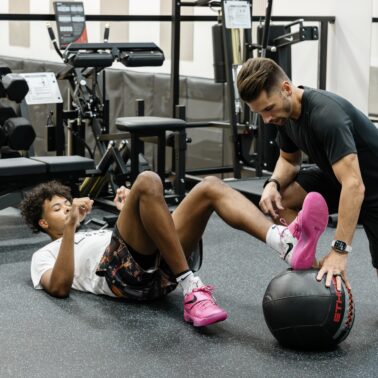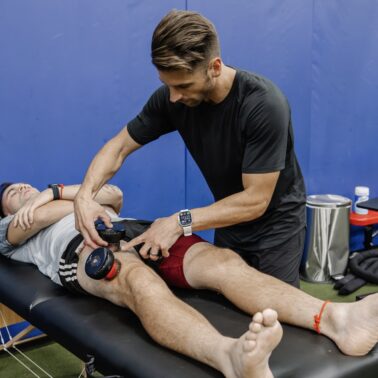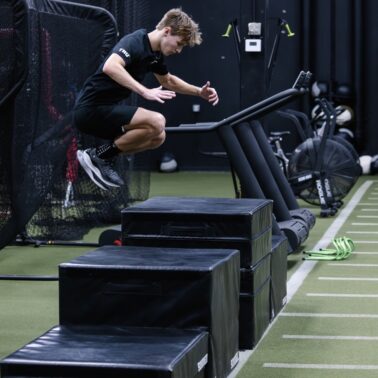“The journey back to the field is as much about mental strength as it is about physical recovery.”
Adam Loiacono
What You Will Learn
- The Psychological Impact of Sports Injuries.
- Mental Training Techniques for Rehabilitation.
- The Importance of Setting Realistic Goals and Building Resilience.
Please note that the information provided in this article is for informational purposes only and is not intended as a substitute for professional advice, diagnosis, or treatment. I am not a mental health professional, nor do I claim to have expert knowledge in this field. The content shared should not be used as a basis for making any personal decisions related to mental health or well-being without consulting a qualified healthcare professional.
In the world of sports, physical stature and skill are often the focal points of an athlete’s journey. However, the mental aspect of sports, especially for athletes returning to play after an injury, is equally crucial. The path to recovery is not just about healing physically but also about overcoming the mental hurdles that come with being sidelined due to injury. This blog post dives into the psychological challenges athletes face post-injury and explores strategies for mental preparation that are essential for a successful return to play. For additional resources, check out these 10 resources to enhance mental health during sports rehab.
Understanding the Psychological Impact of Sports Injuries
Injuries are an inevitable part of any athlete’s career, but their impact goes beyond the physical pain and recovery. Athletes often experience a range of psychological responses following an injury, including anxiety, depression, and a sense of loss. The journey back to the field or court is not just about physical healing but also about managing these emotional responses effectively.
For example, consider the case of a professional basketball player who suffered a major knee injury. Despite a successful surgery and rehabilitation, he struggled with the fear of re-injury, which affected his performance upon return during the end stages of his rehab. This case highlights the importance of addressing psychological factors in the rehabilitation process.
The Role of Mental Training in Rehabilitation
Integrating mental training into the rehabilitation process is not only beneficial but often crucial for a holistic and effective recovery. Mental skills play a pivotal role in how an athlete copes with the challenges of recovery and returns to their sport.
- Imagery and Visualization: These techniques are fundamental in maintaining an athlete’s connection with their sport during periods of inactivity. By imagining themselves executing exercises, athletes can reinforce neural pathways that are crucial for their recovery. For example, a basketball player might visualize executing a perfect squat, while a swimmer might imagine executing perfect pull up. This mental practice can aid in maintaining movement quality and can even contribute to physical recovery by keeping the brain engaged in the activity.
- Self-Talk: The power of positive self-talk in boosting confidence and mental resilience cannot be overstated. Athletes should be encouraged to practice affirmative self-dialogue, focusing on their strengths and progress. It is very easy for athletes to focus on all the things that they can’t do. Its our jobs to highlight the things they can do and encourage more positive self-talk.
- Relaxation Techniques: Techniques such as deep breathing and mindfulness training through popular apps are vital in managing stress and anxiety. These practices help athletes to maintain a calm and focused mindset, essential for dealing with the pressures of injury and the eagerness to return to play.
- Goal Setting: Setting realistic, achievable goals is another crucial aspect of mental training during rehabilitation. Goals should be specific, measurable, achievable, relevant, and time-bound (SMART). By setting short-term goals, athletes can track their progress and stay motivated. For example, a runner recovering from a knee injury might set a goal to walk a certain distance without pain before progressing to a light jog.
- Focus Control: Training athletes to control their focus and concentrate on the present moment can significantly impact their rehabilitation. By learning to direct their attention away from negative thoughts or anxieties about their injury or future return to sport, athletes can concentrate on their current rehabilitation activities and progress.
Setting Realistic Goals and Expectations
An integral part of mental preparation during rehabilitation is setting realistic goals. This process involves creating a clear roadmap for recovery, one that includes both short-term and long-term objectives. Short-term goals might include completing specific exercises, improving range of motion, or gradually increasing training intensity. Long-term goals, on the other hand, focus on returning to competitive play or achieving pre-injury performance levels.
For athletes, it’s crucial to understand that progress might not always be linear. There will be good days and setbacks. Setting realistic expectations helps in managing frustrations and maintaining a positive outlook throughout the recovery process. For instance, a runner recovering from a stress fracture might set an initial goal of walking a certain distance, gradually transitioning to jogging, and eventually running, while being mindful of their body’s responses and not rushing the process.
The image below shows a YELLOW line – what we all hope rehab will be. Then there is the BLUE line – what rehab really is. Showcasing this image early on in the rehab process is something I do to help set realistic expectations and manage emotions.

Building Resilience and Overcoming Fear of Re-Injury
Resilience is key in an athlete’s mental toolkit, especially when recovering from an injury. This resilience can be cultivated through various strategies. One effective approach is to focus on what can be controlled – such as attitude, effort, and adherence to rehabilitation protocols – and letting go of what cannot be controlled, like the past injury or the speed of recovery.
Overcoming the fear of re-injury is another critical aspect. Gradual exposure to the sport, under controlled conditions, can help in regaining confidence. For example, a basketball player recovering from an ankle sprain might start with light shooting drills, gradually progressing to more dynamic movements as their confidence and physical ability improve.
Support systems play a significant role here. Regular discussions with coaches, mental health professionals, and fellow athletes who have gone through similar experiences can provide valuable insights and emotional support.
Conclusion
Returning to sports after an injury is as much a mental challenge as it is a physical one. By understanding the psychological impacts, incorporating mental training into rehabilitation, setting realistic goals, building resilience, and drawing inspiration from success stories, athletes can pave their way towards a successful comeback. The journey may have challenges, but with the right mindset and support, triumph over adversity is not just a possibility but a likelihood.
Remember, the path to recovery is not just about getting back to the game; it’s about emerging stronger, both physically and mentally.



